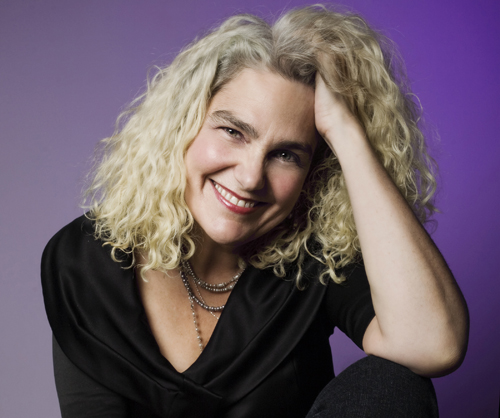
What do the Elephant Man, the Hunchback of Notre Dame and the Phantom of the Opera have in common? Each of these characters – real and fictional – was vilified for being different. That’s because the media often portray people with physical differences as scary.
“I don’t think it’s a coincidence that in many horror movies, the villain and the deranged person is the person with a facial difference or some kind of bodily difference or disability,” says Carla Rice, a gender studies professor in the Department of Family Relations and Applied Nutrition, and Canada Research Chair in Care, Gender and Relationships. “There’s this old notion that, if you have a physical difference, there has to be something flawed about your character.”
Our perception of beauty is something the Redefining Beauty Video Project is trying to change.
The project was launched by the U of G Wellness Centre, which partnered with Rice’s Re-Visioning Differences Media Arts Laboratory (REDLAB) – a multimedia studio and expressive arts institute. Organizers are seeking written submissions from U of G students explaining what they consider to be beautiful in an attempt to expand the definition of beauty to include people with disabilities or differences.
Eight to 10 students will be chosen to have their stories filmed in a three-minute video.
Your one-page proposal should outline what will be seen in the video, how the video will incorporate difference or disability, why people should see it and why you are telling the story. If your proposal is selected, you will be invited to attend a two-day video production session March 9 and 10.
No video experience or equipment is required. Video artist Dawn Matheson, who works with Rice in the REDLAB, will help with filming and editing. The videos will later be shown in classes to foster discussion.
What role do the media play in our concept of beauty? “The media doesn’t only reflect back to us our own notions of what is beautiful and desirable,” says Rice, “but the media also reflects back to us our ideas of what is ugly and undesirable and unacceptable.”
Lindsay Fisher created a video for Rice’s Project Re-Vision, which examines body image in women living with disabilities or differences. In the video, Fisher explains how she didn’t realize that one of her eyes was slightly higher than the other – until a boyfriend pointed it out to her. But that didn’t stop her from feeling beautiful when another man drew a portrait of her and told her she was beautiful. Fisher has since become a facilitator with Project Re-Vision.
If beauty is in the eye of the beholder, the video project aims to expand the beholder’s gaze. The media aren’t entirely to blame for perpetuating unrealistic standards of beauty. “The media in a way is giving us what we want,” says Rice. “These values circulate, and advertisers and people who make media are responding to what their audiences desire. It’s kind of easy to blame media, but we all have a role to play.”
The idea for the video project came from the lack of representation of body difference in media, says Melanie Bowman, Wellness Centre manager. She points to commercials for everyday products such as toothpaste that rarely feature someone who uses a wheelchair.
“We’re just looking at the pieces that are missing,” says Bowman. “How can we invite people who may feel they’re not represented for a myriad of reasons, and what story would they like to tell about beauty and what beauty means to them?”
She says people who are perceived as different are often bullied, and the problem may continue beyond elementary or high school to university and the workplace. Some people may resort to humour and teasing because they don’t know how else to respond to differences.
“There’s this notion that we all need to look the same,” says Bowman. “There is a safety in being the same. If you’re not, you stand out and that isn’t always safe. It can become unsafe for the person who’s different.”
She adds that people with physical disabilities often face a higher risk of sexual assault and that incidents of bullying, harassment and physical violence are highest among LGBTQ (lesbian, gay, bisexual, transgendered, queer/questioning) youth.
Bowman hopes the video project will broaden people’s perspectives of what is beautiful. “I’d really like to show individuals with differences in a really positive way and a very empowered way and cut through some of the stereotypes so that we can see them as real people and not objects to either feel sorry for or to bully or to harass.”
She says the project’s benefits work both ways: participants feel empowered by sharing their experiences, and viewers gain a better understanding of what it’s like to live with a difference or disability. People with invisible disabilities, such as mental health issues, eating disorders and learning disabilities, are also encouraged to submit a proposal.
“We’re really trying to encourage people to tell their own story,” says Bowman. “I think there’s a sincerity that comes with telling your own story as opposed to telling someone else’s story. I’ve been excited by the proposals that have come in so far. I think, ‘Wow, there’s some real bravery here.’”
Send proposals to Bowman at mbowman@uoguelph.ca. The deadline is March 1.